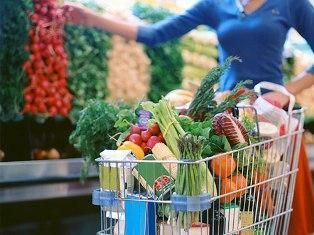
Retailers in South Africa under fire for high food prices – load shedding is no excuse
The Competition Commission says that South African consumers are paying higher prices for certain foods, even though inflation and producer costs have come down significantly. Meanwhile, retailers continue to grow their profits.
This is one of the key findings in the commission’s latest Essential Food Pricing Monitoring (EFPM) Report.
The report looked at comparative trends in grocery retailer margins to global peers and found that trends in retail profits over the past three to four years show that South African retailers are more profitable than their counterparts in other countries.
Local retailers have maintained or bumped up their margins in the last four years, while international retailers have seen their margins thinning.
While the commission conceded that there may be various reasons for this – including different levels of competition – it has also picked up an ongoing “rocket and feather” effect in food pricing, where shelf prices shoot up amid high inflation, but take significantly longer to come back down, even if there is a rapid decline in inflation.
This effect has been seen in maize meal, cooking oil and bread, in particular.
While overall inflation has come down, food inflation remains nearly twice the inflation rate for all goods and services, the commission noted.
“The commission is actively monitoring essential food prices and investigating the factors driving food inflation,” it said. “This ensures transparency regarding the profit margins set by producers and retailers of these products.”
With upstream commodity prices declining in the first half of 2023, the commission said it is now focussing on how quickly this translates into lower prices for consumers.
Load shedding has again emerged as another possible reason for prices remaining high; however, some food producers – outside of poultry producers – have told the commission that the outages haven’t had a material impact on their operating costs.
“Some of the large food companies have recorded large revenue increases as a result of price increases rather than volume growth. Some producers have indicated that load-shedding costs have not had a material impact on their businesses, except for poultry producers,” the commission said.
Further down the supply chain, retailers – who get no rebates or tax breaks from the government for their mitigation efforts – have spent billions of rands to deal with load shedding, which could impact retail prices. Despite the load shedding costs, however, revenue and profits in the sector are very healthy.
Total revenues in the South African grocery sector have grown by 38% since 2019 and 13% from 2022 to 2023. The top national grocery chains collectively grew their profits by 26% from R13.8 billion in 2019 to R16.6 billion in 2023, the commission noted.
“The financial results of food companies show a mixed picture on the costs of load shedding, which calls a measure of caution when explaining its role in food prices,” the commission said.
“Even with the additional effect of load shedding, the rocket and feather effect has been a longstanding feature of food value chains domestically which indicates that these value chains at the producer and retail level are not as competitive as they could be.”
The commission said that constant gross margins indicate that retailers’ ability to pass on price increases hasn’t changed significantly and that there hasn’t been a material change in competitive dynamics among grocery retailers.
“The recent agreements to phase out exclusive leases with Shoprite, Pick n Pay and Spar should bring more competitive pressure in future,” it said.
Rocket and feather food prices
The EFPM looked at recent pricing trends and margins at the producer and retail level and found that the inflation lag is very real, pointing to retail prices that are yet to reflect the easing of inflation from three months ago.
This includes:
- Bread and wheat prices (lagged three months to reflect the time to feed into producer stock) fell by approximately 10% during the first quarter of the year – but producer and retailer prices for bread both rose by 3% in this period, and only started to drop in the second quarter of the year.
- White maize prices (lagged three months) have fallen consistently and by 23% since February, but producer and retail prices for maize meal have yet to decline.
- Cooking oil prices have been on a declining trend since a year ago when the EFPM report indicated that producer prices were rising despite sunflower seed prices remaining stable in South Africa. However, whilst retailers cut their margins during the period of rising prices, they have been slower to reduce prices, resulting in expanding margins. More recently, sunflower seed prices (lagged three months) have dropped, but producer prices have still not responded.
- As noted in the previous EFPM Report, IQF chicken price inflation remains lower than food inflation. The Commission will continue to monitor this value chain following the reimposition of anti-dumping tariffs.
News Category
- International retailers
- On the move
- Awards and achievements
- Legislation
- Wine and liquor
- Africa
- Going green
- Supplier news
- Research tools
- Retailer trading results
- Supply chain
- Innovation and technology
- Economic factors
- Crime and security
- Store Openings
- Marketing and Promotions
- Social Responsibility
- Brand Press Office
Related Articles

Empowering South African households through gro...

SPAR shares practical tips to beat food inflation

South African motorists could be paying up to R...

Big VAT changes on the cards


